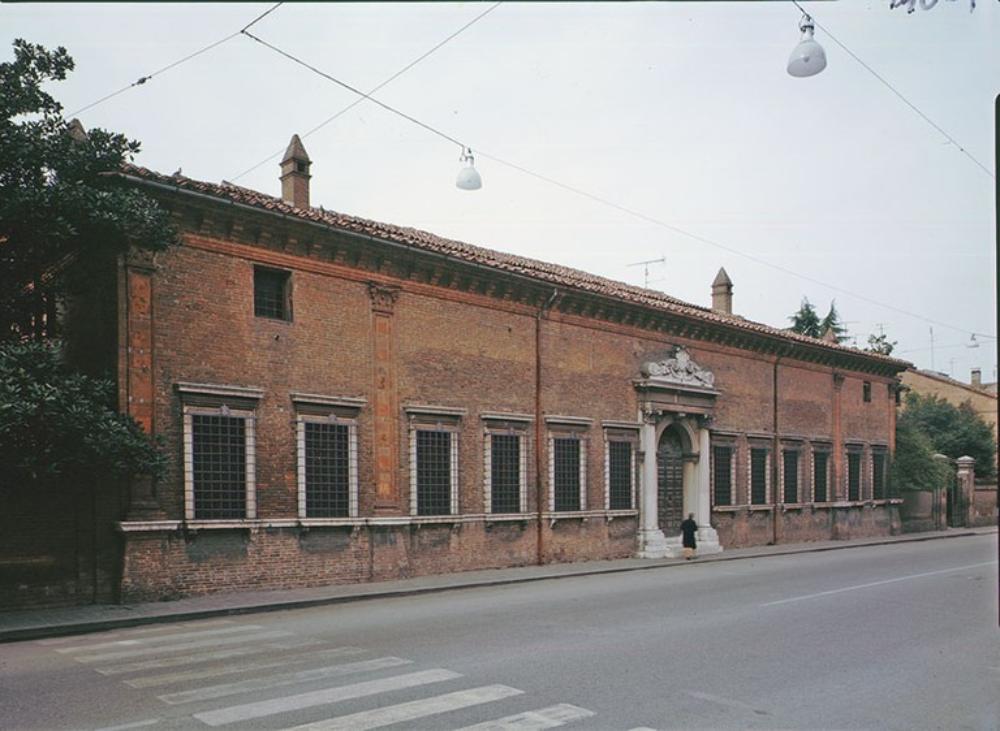
Since 1938 the Marfisa d'Este building, built around 1559 by Francesco D'Este and inherited in 1578 by his natural daughter Marfisa, has been intended for the museum re-enactment of a sixteenth-century residence. The original decorations, the work of the Filippi workshop, were largely repainted during the restoration work at the beginning of the twentieth century, nevertheless they represent the most explicit Ferrara testimony of the aristocratic predilection for grotesque decoration. Once the original furnishings were lost, the rooms were furnished with furniture found on the antiques market, many of which came from the Venetian Donà delle Rose collection. In addition to wardrobes, chests, tables and sideboards, mainly dating back to the 1910th and 1938th centuries, the museum also features paintings and sculptures. The decoration of the original floor is documented by some ceramic tiles, displayed in the windows of the last room. The large garden, which once connected the entire complex with Palazzo Bonacossi, houses the Loggia degli Aranci, an example of a painted pergola open illusively on a false opening. Inside the building the portrait of Marfisa as a child appears in front of that of his sister Bradamante in the frescoes of the atrium, by Camillo Filippi who in the second half of the XNUMXth century executed the grotesques on the vaults of the building, in collaboration with the painters of his workshop. In Ferrara, the Filippi workshop was the most accredited workshop in the sixteenth century to rely on for the creation of sumptuous environments within palaces and other buildings. The decoration of the building represents an excellent example of grotesque decoration, which qualifies the noble sixteenth-century residences, in its vaults there are represented mythological scenes, exploits of Francesco d'Este, vegetal festoons, portraits. Between XNUMX and XNUMX, the pictorial restoration of the vaults was carried out with the aim of not distorting the meaning of the original decorations, which were largely repainted, with the exception of those in the atrium, by Giuseppe Mazzolani, Enrico Giberti and Augusto Pagliarini. Among the sculptures present, the marble 'Bust of Ercole I d'Este', created for the Porta degli Angeli by the Mantuan Sperandio di Bartolomeo Savelli and the marble high relief, attributed to the workshop of Antonio Lombardi, with the 'Madonna enthroned with Child, St. George and the client', perhaps identifiable with Alfonso I d'Este. Among the decorations that can be observed are the musical cupids that look out from the ceiling of the anteloggia of the Loggia degli Aranci, decorated with landscapes and hunting and fishing scenes depicted in the Sala della Grotta, once perhaps used as a music room.
Information on Civic Museums of Ancient Art – Palazzina Marfisa
Corso Giovecca, 170,
44121 Ferrara (Ferrara)
0532207450
arteantica@comune.fe.it
https://www.artecultura.fe.it/index.phtml
Source: MIBACT
